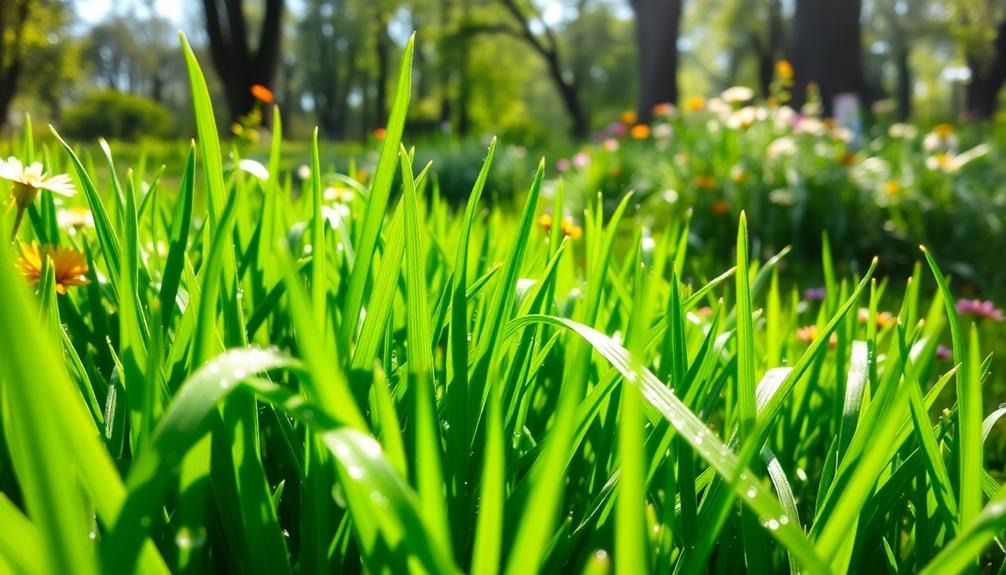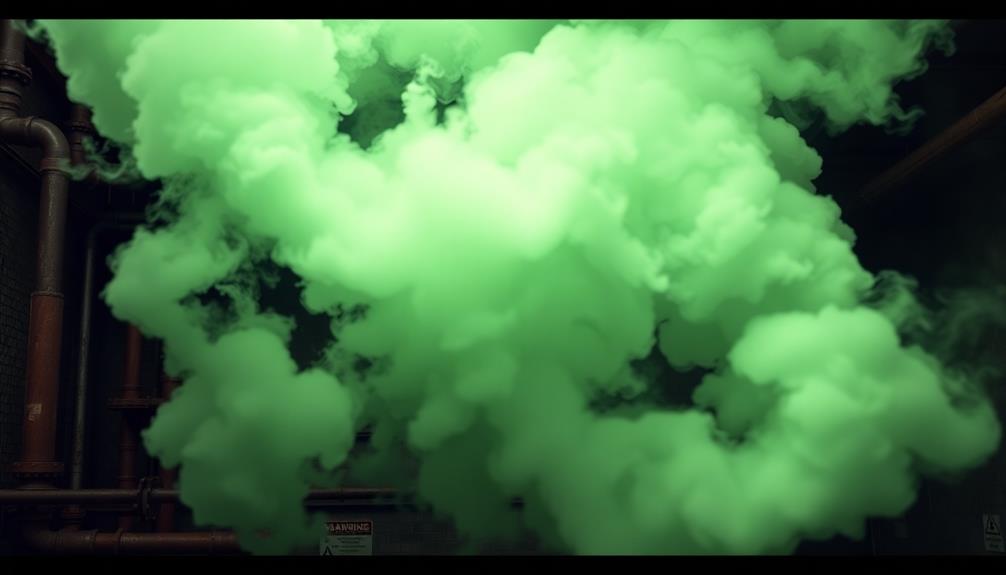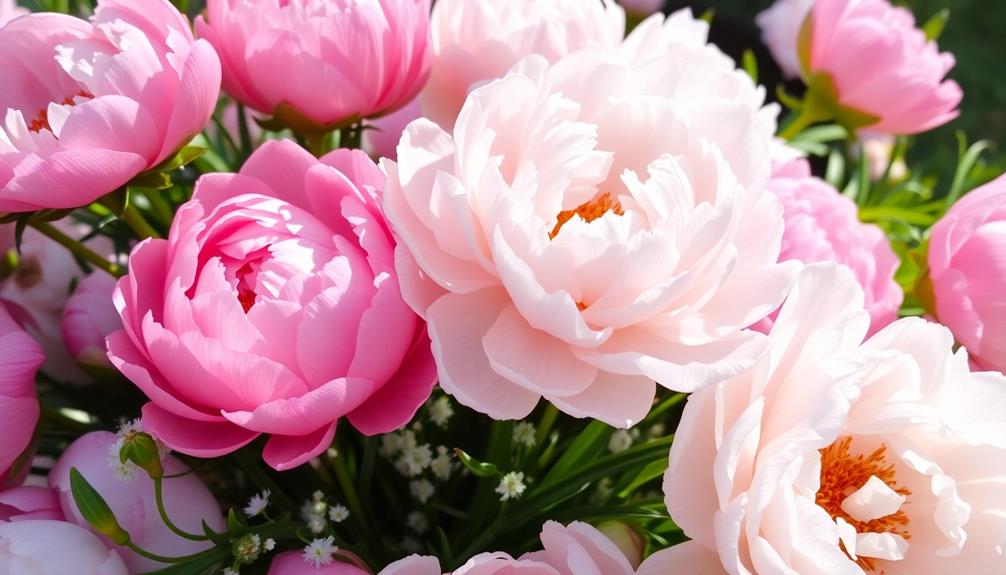When you smell freshly cut grass, you're taking in a vibrant aroma that's a mix of sweet, earthy, and sharp notes. This scent comes from green leaf volatiles released when the grass is cut. You might notice it feels nostalgic, reminding you of sunny days and outdoor adventures. Different types of grass can produce distinct smells, with couch grasses often being the strongest. Alongside the lovely aroma, it also gives a sense of relaxation and warmth. Interested in how this scent affects your mood and environment? There's much more to discover about the benefits and feelings this smell brings!
Key Takeaways
- Freshly cut grass emits a vibrant aroma, characterized by green, earthy, and sweet notes, evoking feelings of nostalgia.
- The scent is primarily due to green leaf volatiles (GLVs) like cis-3-hexenal, which is detectable at low levels.
- Different grass types produce varied scent profiles; couch grasses have a stronger aroma compared to Buffalo grasses.
- The aroma enhances outdoor experiences, commonly associated with suburban neighborhoods, parks, and agricultural settings during mowing or hay production.
- Freshly cut grass scent is linked to positive emotions and memories, promoting relaxation and well-being.
Introduction
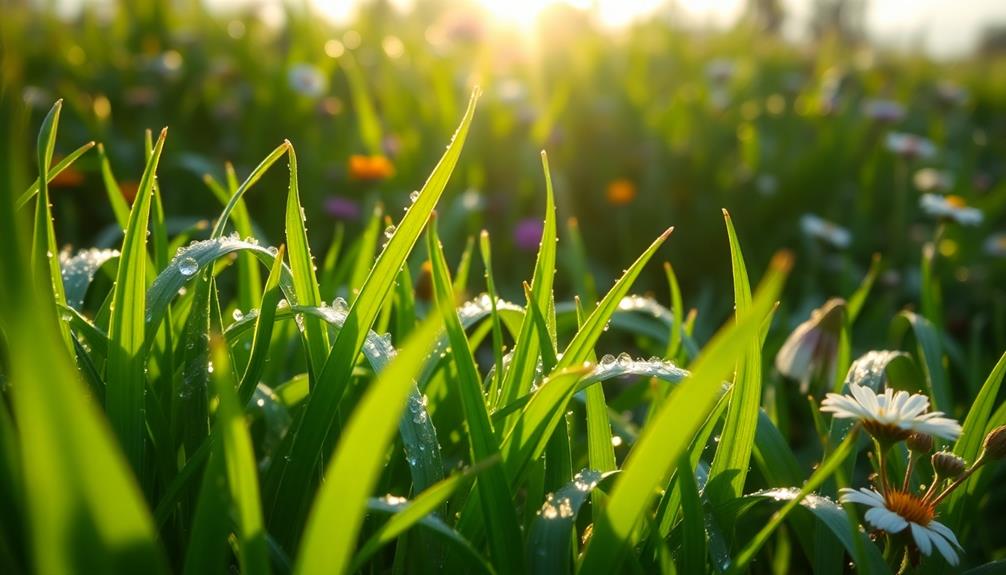
The unmistakable scent of freshly cut grass often brings back memories of sun-soaked afternoons and outdoor adventures. You mightn't know it, but this delightful smell comes from green leaf volatiles (GLVs), which are natural chemicals released when grass gets cut.
These GLVs create that unique aroma, blending sweet, earthy, and slightly sharp notes that can instantly transport you back to carefree days in the park or backyard.
One of the key components of this fragrance is cis-3-hexenal, a potent chemical detectable by humans at incredibly low levels. Different types of grass also produce varying scent profiles. For instance, couch grasses tend to release a stronger aroma than Buffalo grasses.
The smell of freshly cut grass does more than just evoke nostalgia; it offers psychological benefits, too. Many people associate this fragrance with positive memories and feelings of relaxation.
This is why the aroma of Fresh Cut Grass is often used in fragrances and aromatherapy. So, the next time you catch a whiff of that familiar scent, remember its rich background and the joy it can bring!
Description of the Smell
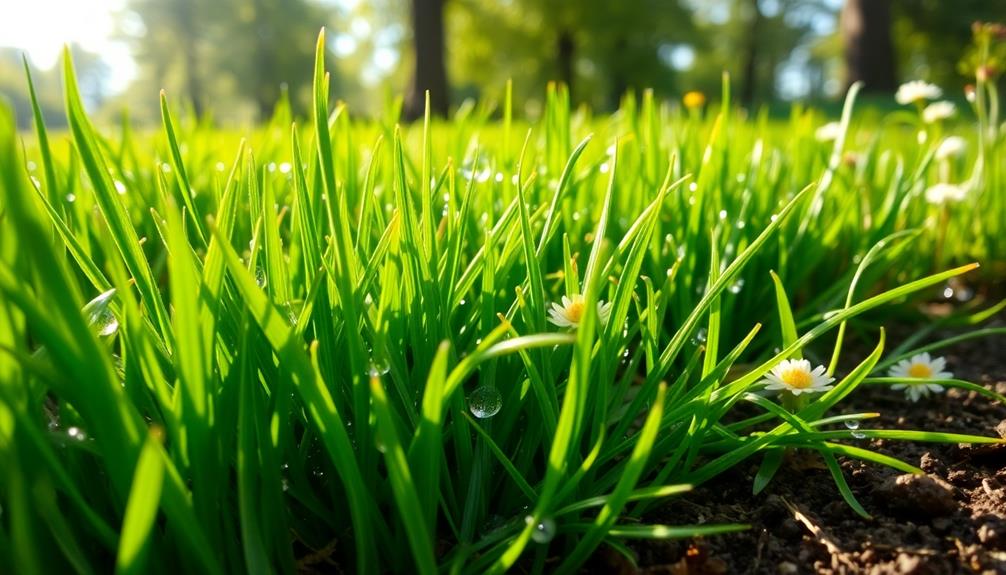
Freshly cut grass presents a vibrant and invigorating scent that's hard to ignore. This delightful aroma comes from green leaf volatiles, or GLVs, released when the grass experiences mechanical damage. You might notice a blend of green, earthy, and slightly sweet notes that remind you of sunny days spent outdoors in verdant fields.
The fresh-cut grass smell has a strong psychological effect, often stirring up feelings of nostalgia. It can make you think of joyful spring and summer activities, like picnics or playing with friends. The scent's variations depend on factors like grass type, time of day, and environmental conditions. Some grass species even produce a more pronounced aroma, enhancing your experience. Additionally, the fresh-cut grass smell often contrasts with the earthy tones of fall aromas in the air as the seasons change, creating a sensory transition between summer’s warmth and autumn’s crispness. This shift can evoke a blend of emotions, from the excitement of upcoming fall festivities to a subtle longing for the carefree days of summer.
This unique scent symbolizes life and nature, which is why it's so widely loved. It appeals to everyone, transcending gender in both fragrances and personal preference.
Source and Composition
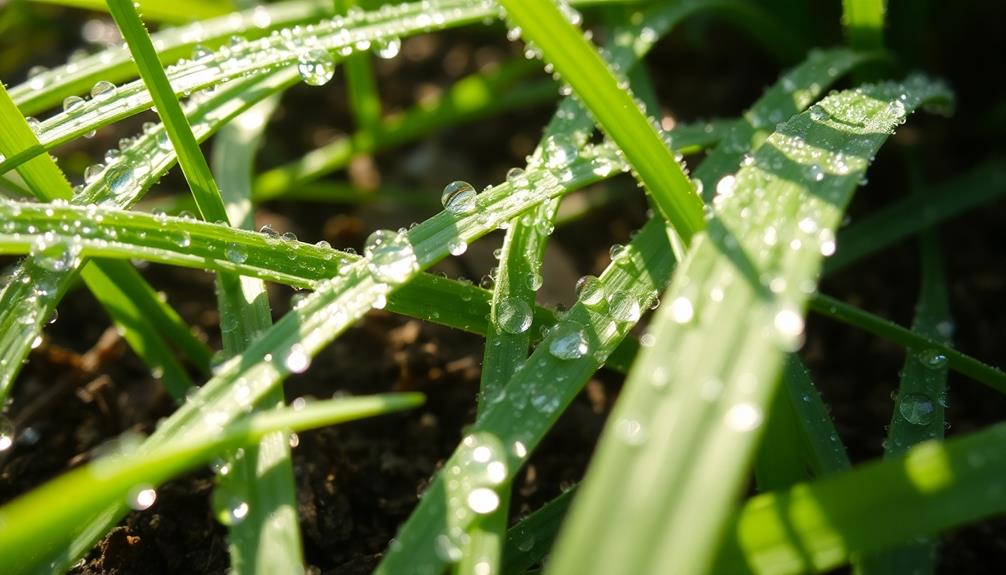
Grass's captivating aroma stems from a complex blend of chemicals released when it's cut, primarily Green Leaf Volatiles (GLVs). When you cut grass, it experiences mechanical damage, triggering the release of these GLVs. In fact, the emissions can increase by up to 180 times!
The most notable among these is cis-3-hexenal, which you can detect even at 0.25 parts per billion. This is a big part of what makes that freshly cut grass scent so special.
Different species of grass produce distinct scent profiles. For instance, couch grasses typically have a stronger aroma than Buffalo or fescue grasses. The environmental factors around you also play a role. You might notice that more GLVs are released in the morning, making the aroma even more potent during that time.
In addition to GLVs, freshly cut grass emits other volatile organic compounds (VOCs) like methanol, acetaldehyde, and ethanol. All these chemicals blend together to create that unique, fresh aroma you love.
Typical Scenarios or Environments
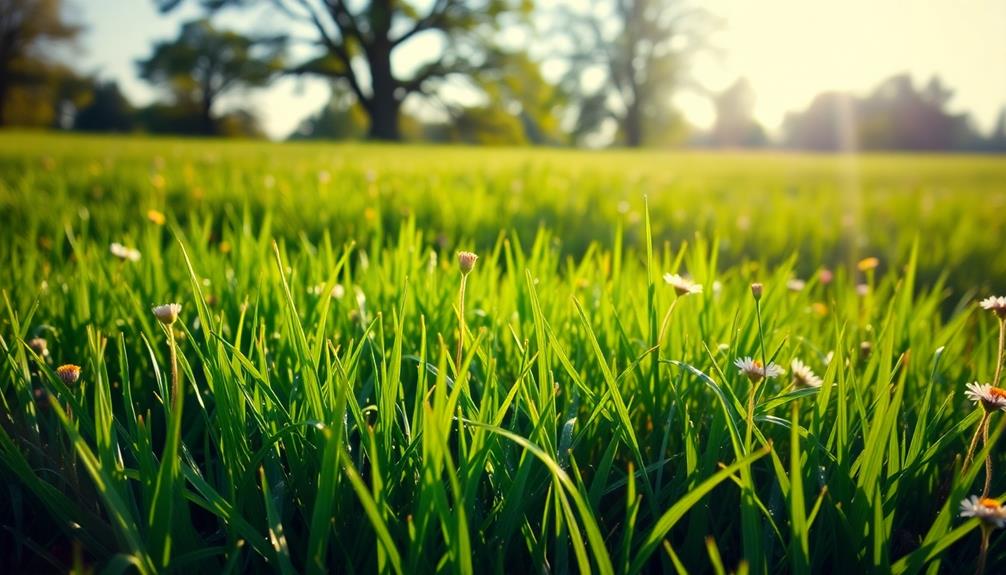
In suburban neighborhoods, the smell of freshly cut grass becomes a familiar and cherished scent during lawn maintenance in spring and summer. You can't help but notice how this aroma fills the air, especially when neighbors are out mowing their lawns. The scent comes from green leaf volatiles released by the grass, creating a refreshing and seasonal experience.
When you visit parks or recreational fields, you'll likely encounter the same delightful smell. Regular mowing keeps these areas inviting for picnics, sports, and community events. The aroma enhances your time outdoors, making activities more enjoyable.
In agricultural settings, like hayfields, the smell of freshly cut grass is even stronger when farmers harvest for hay production. This distinct scent lingers in rural areas, reminding you of the hard work that goes into maintaining the land.
Even in urban areas, you can find pockets of green spaces where the smell of freshly cut grass breaks through the concrete surroundings. These parks contribute to the overall environmental experience, making city living a bit greener and more pleasant.
Emotional or Cultural Associations

The aroma of freshly cut grass doesn't just enhance outdoor experiences; it stirs deep emotional connections and cultural memories. When you breathe in that scent, it often brings a wave of nostalgia, reminding you of pleasant summer days spent playing outside. This emotional appeal makes the smell comforting and familiar, creating a sense of calmness and security in your heart.
Cultural significance also plays a role in how you feel about this scent. For instance, songs like Louis Armstrong's "Indiana" link the aroma of freshly cut grass with themes of home and comfort. Did you know that the smell comes from green leaf volatiles, which are also found in ripe fruits and vegetables? This connection might make you feel even more secure, as it subconsciously suggests edibility.
You'll find that the comforting qualities of freshly cut grass have inspired many scented products. These products aim to capture that nostalgic essence, enhancing your daily experiences.
Health or Safety Considerations
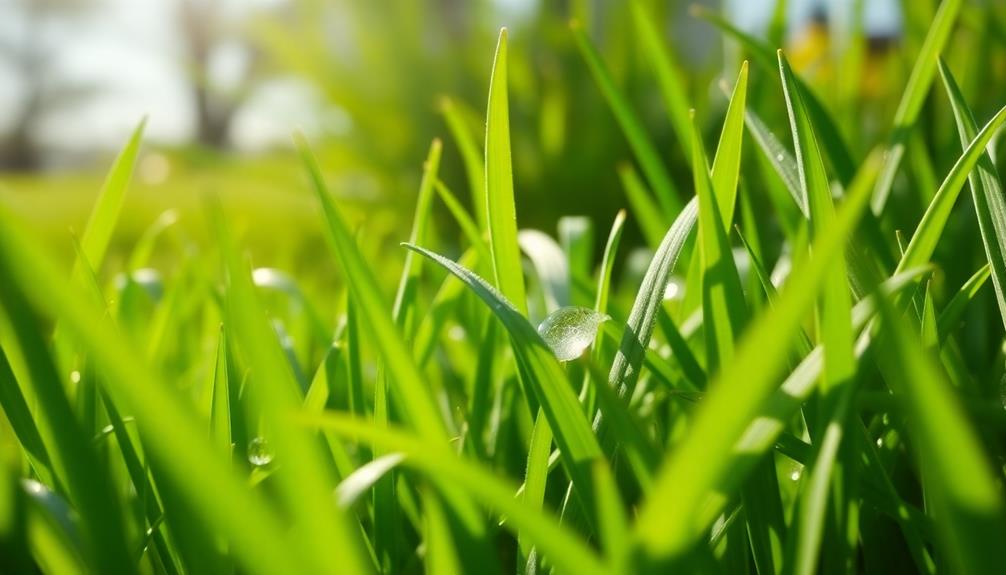
When you enjoy the scent of freshly cut grass, it's important to be aware of potential health and safety considerations. The delightful aroma comes from green leaf volatiles (GLVs), but mowing can also release volatile organic compounds (VOCs) like methanol and ethanol. Prolonged exposure to these compounds can have adverse effects on your respiratory health, especially if you have existing conditions.
Additionally, engaging in outdoor activities can promote overall well-being, much like how mushroom coffee supports immune function. While the smell of fresh grass can uplift your mood, some people might experience allergic reactions to grass pollen during mowing. It's a good idea to take precautions if you know you're sensitive to allergens.
Furthermore, mowing contributes to about 10% of total hydrocarbon emissions in urban areas, which can affect air quality and worsen photochemical smog.
To keep both your health and the environment in mind, consider sustainable lawn maintenance practices. These methods can help reduce emissions and promote better air quality while still allowing you to enjoy that wonderful grass scent.
Final Thoughts
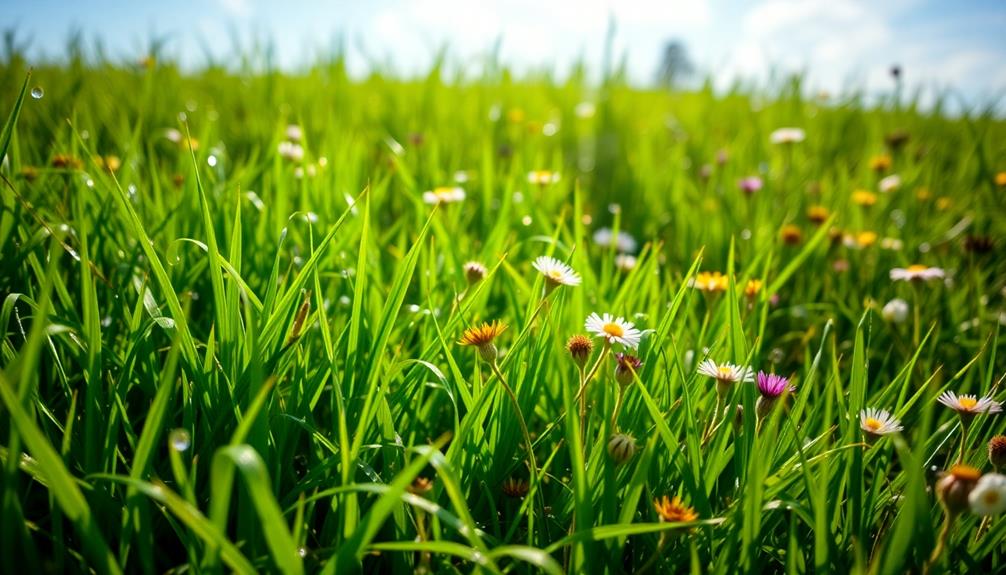
Enjoying the scent of freshly cut grass can evoke cherished memories and enhance your mood, making it a sensory delight. This sweet smell comes from green leaf volatiles, or GLVs, which are released when grass experiences mechanical damage, like when it's cut. These tiny compounds, such as cis-3-hexenal and cis-3-hexenol, can increase up to 180 times after cutting, creating a unique olfactory experience.
The aroma of freshly cut grass often triggers feelings of nostalgia. You might remember playing outside on sunny days or picnicking in the park. Different grass species and environmental conditions can change this smell, keeping your experiences fresh and exciting.
Plus, the mood-boosting properties of this scent make it popular in aromatherapy. It can promote relaxation and reduce stress, adding to its emotional appeal.
Next time you catch a whiff of that delightful aroma, take a moment to appreciate how it connects you to happy memories. Let it uplift your spirits and bring a sense of calm. After all, the scent of freshly cut grass is more than just a smell; it's a celebration of nature and a reminder of the joyful moments in life.
Frequently Asked Questions
How Would You Describe the Smell of Grass?
When you think about the smell of grass, you might picture a fresh, sweet aroma that's both sharp and comforting. It can evoke warm memories of summer days spent outdoors, surrounded by nature's beauty.
What Does Stink Grass Smell Like?
When you encounter stink grass, you'll notice a strong, unpleasant odor—like decaying material. Its scent intensifies when crushed or stressed, especially in warm weather, making it quite a nuisance in your garden or nearby areas.
What Is the Sweet Smell of Grass?
When you smell freshly cut grass, you're likely inhaling sweet, green leaf volatiles. This scent can evoke nostalgia and positivity, connecting you to sunny days and outdoor activities, lifting your spirits and reducing stress.
Does Dead Grass Have a Smell?
Yes, dead grass does have a smell. You'll notice it's a dry, earthy scent, often musty due to decomposition. Environmental factors like humidity can intensify this odor, making it less pleasant than fresh grass.
